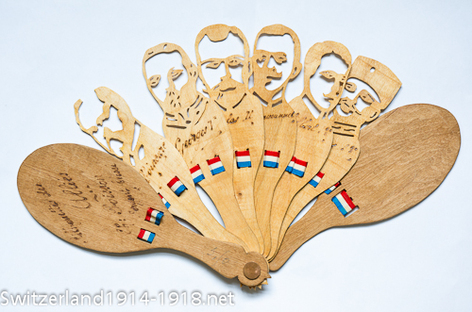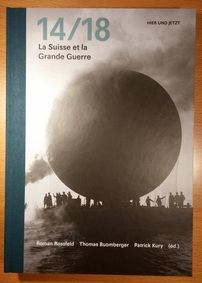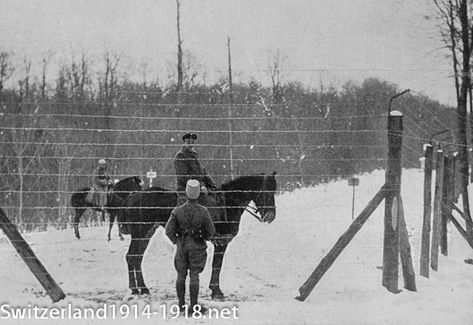Above: The impressive 18 metre high Forchdenkmal (Forch Monument) or Wehrmännerdenkmal (Soldiers' Monument) at Forch, in the canton of Zurich. It commemorates Swiss soldiers who died while on active duty during the First World War.
|
The Swiss have memorials that mark the First World War. When I first discovered this surprising fact, I realised that the subject of Switzerland during that conflict deserved greater study. Here I will look at a few examples of different types of memorials in Switzerland.
Above: The impressive 18 metre high Forchdenkmal (Forch Monument) or Wehrmännerdenkmal (Soldiers' Monument) at Forch, in the canton of Zurich. It commemorates Swiss soldiers who died while on active duty during the First World War.
4 Comments
The Western Front in the First World War stretched from the Belgian coast to the Swiss border. But what happened at that point, which is often called “Kilometre Zero” or “Km 0”?
The photo above shows one of the bunkers just across the frontier inside Switzerland, from which the Swiss army kept watch on the opposing forces. Since Switzerland was a neutral country, its frontiers had to be guarded to prevent the warring armies crossing them, deliberately or accidentally. However there were occasions when the border was crossed...
Image: A Swiss soldier (foreground) talks to a German border guard through the frontier wire. Above: workers at a Swiss munitions factory in Basle. Hang on! Switzerland was neutral during the First World War. What were the Swiss doing, making artillery shells? Well, international law allowed a neutral to trade with both sides. More than that, the Swiss were not simply taking advantage of the war to make a profit. The Allies armies needed as many shells as they could get, and those from Switzerland were a significant contribution.
A wide range of organisations tried to help the prisoners of war (PoW) held by both sides during the First World War. Many countries had local and regimental associations, who supported prisoners held overseas who were connected to their geographical area and/or military unit. The role of the International Committee of the Red Cross (ICRC) in Geneva in co-ordinating information on individual prisoners and in inspecting prisoner of war camps is also well known. But what about a British organisation - situated in Switzerland - that helped locate PoWs? And in fact its work was mainly down to the efforts of one man.
There are many books and articles in English and other languages that contain useful information about Switzerland in the period 1914-1918. This bibliography will evolve over time, and I would be happy to hear suggestions for new additions to the list. Read on...
I obtained this unusual 'fan' from a seller in the USA, who had bought it at an estate sale in the San Francisco Bay area. Inscriptions on the item indicate that it was made in 1916 by a French soldier who was interned at Vernayaz (a town in Switzerland). Apart from that, nothing else was known about it, but I have managed to discover some of the fascinating story behind this curious object.  Review of new book "14/18 La Suisse et la Grande Guerre" (Switzerland and the Great War)5/11/2014  I am pleased to see that the 100th anniversary of the start of the First World War has led to the publication of a number of books in Switzerland on that country's history during the conflict. "14/18 La Suisse et la Grande Guerre" is the first one that I have seen. I have not had time yet to read it thoroughly, but here is an initial review. Incidentally the striking but at first perplexing photograph on the cover shows a hot air balloon being transported by water from Lac de Neuchâtel to Lac de Bienne in 1915. Not only have the International Committee of the Red Cross (ICRC) released on-line many of their First World War period records covering prisoners of war, but also the Royal Air Force Museum have digitised their collection of 'casualty cards' (and related records) for the same conflict. Here is an example of how these two sets of records can work together. The release of these records is an exciting development, making it much easier to research individual servicemen - in this context, particularly prisoners of war and internees - from the comfort of your own home. For this example I am using the case of Lieutenant William Reid of the Royal Flying Corps, who was the first victim of the German air ace Max Immelman.
I set up this website about two years ago, as a way of raising the profile of the subject of Switzerland during the First World War, publicising the information that I had on this topic, and encouraging others to share information they have. This has gone really well. See the blog posts on this site with information supplied by other people, such as on a painting made by British former prisoners of war interned in Switzerland, a series of photographs of German interned former prisoners of war, and on the Swiss national donation medal. But there was very little easily available information out there (in English at least) on Switzerland and the First World War. With the 100th anniversary of the outbreak of that conflict, this has changed and below I look at some of the interesting stories on the web.
|
The blog will feature interesting images, objects or information relating to Switzerland and the First World War. If you have something interesting that you think could be featured here, I would be glad to hear from you! Thanks.
Archives
November 2015
Categories
All
|




 RSS Feed
RSS Feed
